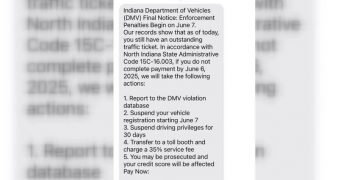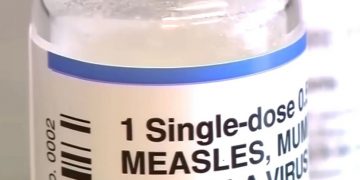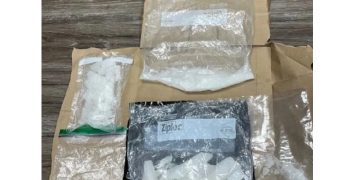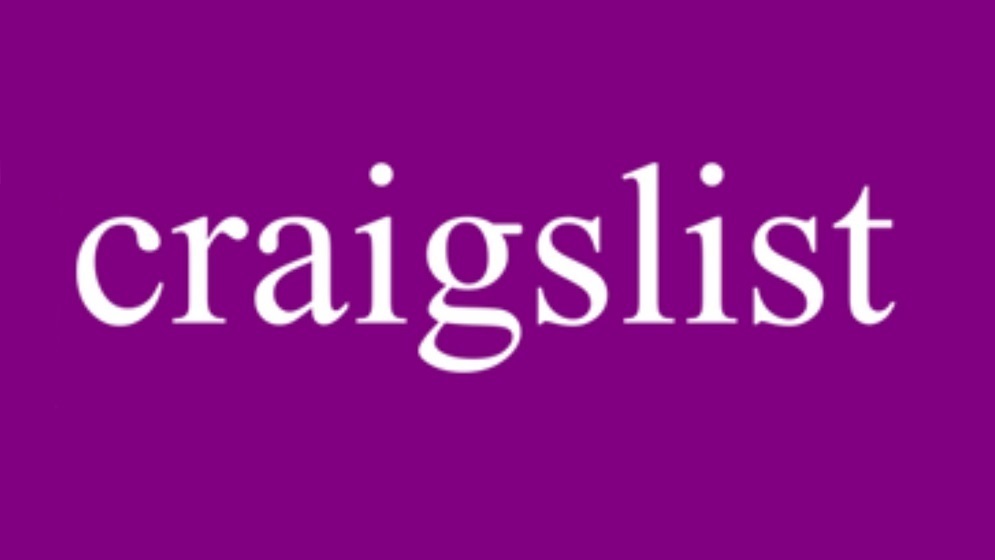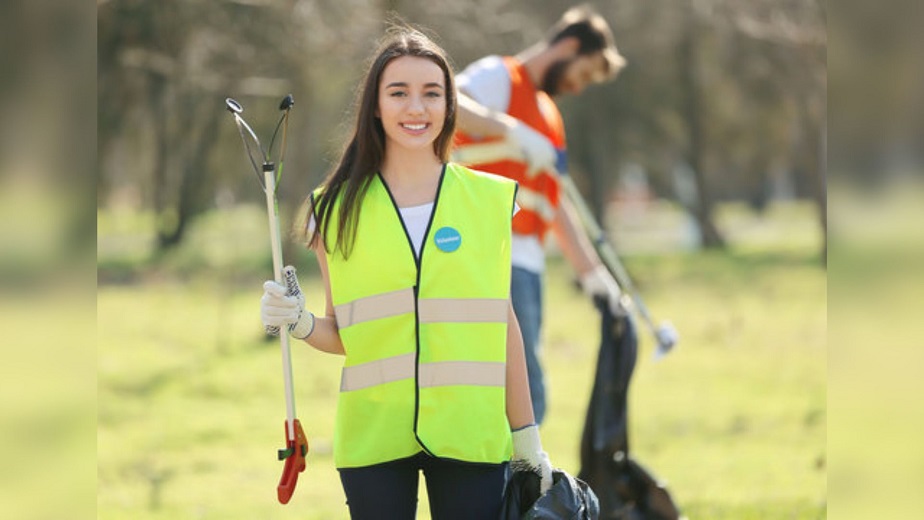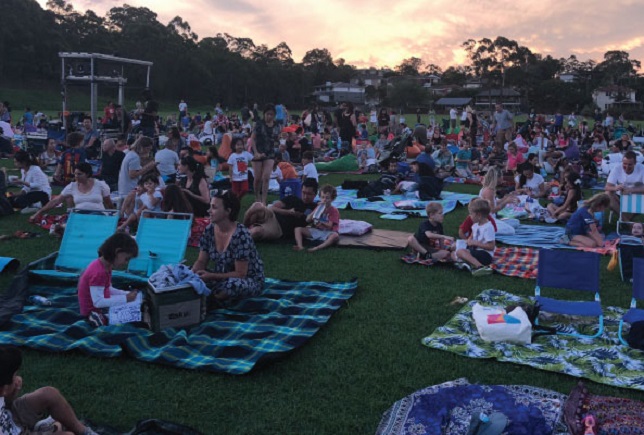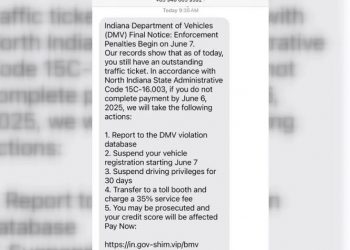Indiana – On Saturday, the state of Indiana’s COVID-19 dashboard logged 8,427 new confirmed cases, which was easily a new daily high since the pandemic started.
It’s 1,851 more cases than the previous daily high, just two days before.
The peak daily confirmed case high during Indiana’s spring surge was almost an order of magnitude lower: 946 on April 26.
In Monroe County, the 112 new cases recorded on the dashboard put the rolling 7-day daily average number of cases at 64. That’s about two and a half times the number of confirmed cases averaged through most of October.
Increased positivity rates, across the state and locally, show that it’s not just the increased number of tests that accounts for the increased number of cases. Monroe County’s 7-day rolling average of positive tests is now sitting at about 5.1 percent. The statewide number is more than twice that, at 10.9 percent.
Even before Saturday’s big jump, the state had been seeing daily highs set on many days over the last month. The most recent day when fewer than 3,000 cases were logged on the dashboard came on Nov. 1.
At Friday’s press conference of local leaders on COVID-19 response, Brian Shockney, who’s president of IU Health’s south central region described how the hospital numbers are climbing. “It is pretty alarming. … COVID-19 hospitalizations across the state of Indiana continue to drastically climb.”
The state’s dashboard shows the latest statewide numbers at 2,634 confirmed or pending COVID-19 patients. That compares to a high of about 1,750 in early April.
Shockney added, “And the south central region is now seeing that same impact.” In the south central region, COVID-19 patient numbers are now 40 percent greater than the peak volume in April, he said.
The rolling 7-day average of daily deaths in the state hit 40 two days ago, just shy of the high of 41 during the spring surge.
On Wednesday, Indiana’s governor Eric Holcomb announced that he was ending his Stage 5 “new normal” plan. It’s replaced with a new order that calibrates restrictions to each county, based on the county-based color-coded metrics.
Monroe County’s metric score is better than all but four other counties in the state, but it will probably be sliding when the numbers are computed next Wednesday.
The county’s board of health met on Friday and approved some changes to the current health regulations, which for the most part already reflected the governor’s new guidelines.
But as county health administrator Penny Caudill pointed out at Friday’s weekly press conference conference, the governor’s order is in some ways stricter than the county’s previous order.
The way the governor’s order is stricter relates to gathering sizes. Based on the color-coded county metric scheme here’s what the governor’s order says:
- Counties designated as Blue may have up to a total of 250 individuals present.
- Counties designated as Yellow may have up to a total of 100 individuals present.
- Counties designated as Orange may have up to a total of 50 individuals present.
- Counties designated as Red may have up to a total of 25 individuals present.
The governor’s order doesn’t distinguish between commercial and non-commercial gatherings in the way Monroe County’s order does. Monroe County is currently designated as a Yellow county, but will likely slide to Orange next week with most of the rest of the state.
Monroe County’s order puts the limit for commercial gatherings at 100 people, if the gathering is held inside or 150 people if it’s held outside. Both are higher than the limit of 50 that will likely apply to Monroe County next week when the new metric scores are calculated.
The city of Bloomington has a separate order in place that limits gatherings to no more than 15 people.
The county board of health met on Friday to revise the county’s health order to reflect the new governor’s order, which is based on individual county metrics. The county’s new order also has a provision that allows bars to offer drink service at the bar, instead of taking orders only at tables where patrons are required to be seated.
The revised county order, which is expected to be issued at the start of the week, will include rules for establishing a queue at the bar to order drinks. Patrons would still have to return to their table to quaff their beverages.
County metrics
Each week a total score is built out of two sub-scores, which are based on: the weekly number of cases per 100,000 residents; and the 7-day positivity rate. The total is the average of the two sub-scores.
For the most recent weekly computation, Monroe County was as good as it gets for the positivity rate. Less than 5 percent is the best score, and last Wednesday, Monroe County was sitting at 4.23 percent.
But the county’s weekly cases per 100,000 stat of 249 was as bad as it gets under the scoring system. Over 200 cases in a week per 100,000 residents gets a score of 3 on the four-point scale, which starts at zero. Monroe County’s averaged score of 1.5 still put it in yellow, along with just four other counties in the state. The rest are orange and red.
About the weekly county metric scores, Penny Caudill told the county board of health at its Friday meeting, “This week, we stayed in yellow in that county metrics map. I was a little surprised, to tell you the truth. So I would anticipate we will be orange next week.”
Caudill said, “I’m not trying to say the sky is falling. But I was surprised that we weren’t already there. It’s kind of close. So the numbers are going up.”
Testing site: Be prepared for lots of questions
At Friday’s press conference, county health administrator Penny Caudill talked about the opening of the new testing site next week (Nov. 16), which is a partnership between the county commissioners, IU Health, Indiana University and the city of Bloomington.
The site is located at 640 South Morton, which is just across the B-Line Trail from the Seminary Park Kroger store. The new site will be open about 35 hours a week, four or five days a week, including some evenings and weekends, Caudill said.
A point that Caudill stressed is the lack of walk-in availability. People need to make a reservation online, she said.
To make an appointment requires answering a lot of questions, Caudill said. “I will tell you, to be perfectly honest, the registration process has a lot of questions. They’re not all long. But there are a lot of questions.”
Caudill added, “To move the line at the clinic quickly, [it’s important] that people complete that registration before they get there.”
Caudill also said the OptumServe testing site on South Walnut will be open through December.
























